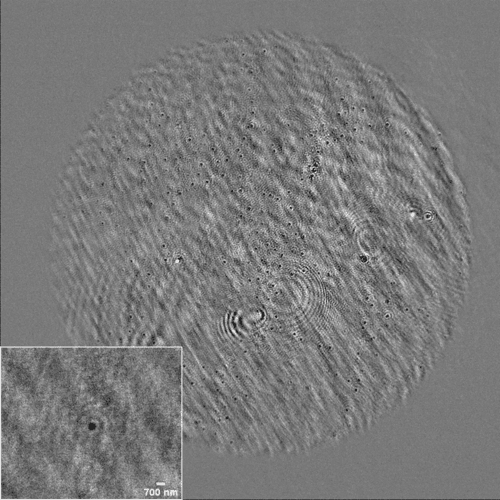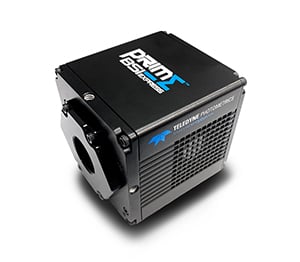iSCAT and TIRF
Dr. Francesco Reina, Prof. Christian Eggeling
Institute for Applied Optics and Biophysics, Faculty of Physics and Astronomy, University of Jena, Germany
Background
Dr. Francesco Reina is a postdoc in the lab of Prof. Christian Eggeling, taking part in quantitative imaging research. The lab of Prof. Eggeling is known for the application of fluorescence correlation spectroscopy (FCS) and STED-FCS to life sciences research, and Dr. Reina is building an imaging system that combines imaging techniques involving single-molecule tracking, namely interferometric scattering (iSCAT) and total internal reflection fluorescence (TIRF) microscopy.
Dr. Reina further explained his research, "These techniques are able to give you information on the single-molecule level at very fast frame rates, especially in the case of iSCAT. We can obtain information complementary to the FCS measurements, looking at the diffusion of molecules on surfaces such as cell lipid membranes and dynamic live cells. By using iSCAT and TIRF simultaneously we hope to achieve high levels of fluorescence specificity at a high sampling rate."
The combination of iSCAT and TIRF allows for detailed, quantitative interrogation of living cells at the single-molecule level, and this demanding technique requires a flexible, powerful camera.

Figure 1: iSCAT images taken using the Prime BSI Express sCMOS. The larger image shows gold nanoparticle-tagged lipids diffusing on a supported lipid bilayer across the full FOV of the Prime BSI Express. The smaller magnified insert shows a 40 nm gold nanoparticle on a glass surface.
Challenge
Due to this system combining both TIRF and iSCAT, the imaging needs of both techniques need to be met by a single camera. TIRF requires high sensitivity, high spatial resolution, and high speeds (typically at high magnifications), and iSCAT requires even higher speeds still, in order to obtain adequate statistics of fast-moving molecules.
Dr. Reina told us about the other challenges of his work, "We focus on single cells or portions of single cells, we really want to go down to the single-molecule level. Ideally, we want to run at over 100 fps across the full camera sensor, and eventually split the camera sensor in half in order to perform TIRF and iSCAT simultaneously on a single camera sensor."
"A big issue with some components of this imaging system is integration into a single hardware control software, previous camera solutions did not integrate well into our preferred software, ImSwitch."
The [Prime BSI Express] gives us flexibility for both TIRF and iSCAT at a high speed and across a large area, without difficulty.
Dr. Francesco Reina, Christian Eggeling
Solution
The Prime BSI Express is a highly flexible and powerful back-illuminated sCMOS camera that delivers high sensitivity at a high speed, across the entire sensor.
Dr Reina described his experience with the Prime BSI Express, "The [Prime BSI Express] gives us flexibility, we can go to a very small homogeneous field of view and acquire as fast as possible, or increase the region to find new samples, without difficulty, and we can repeat this for the whole experiment."
"With [Teledyne] Photometrics we have been able to integrate all our components into our external hardware control software ImSwitch that we are very fond of using, we use the PyVCAM wrapper and it all works very well, we are very happy about that."
"Setting up the [Prime BSI Express] was very straightforward, it works great out of the box. [Teledyne] Photometrics' customer support was very available to us and very quick."

Learn More About The Prime BSI Express
Download This Customer Story